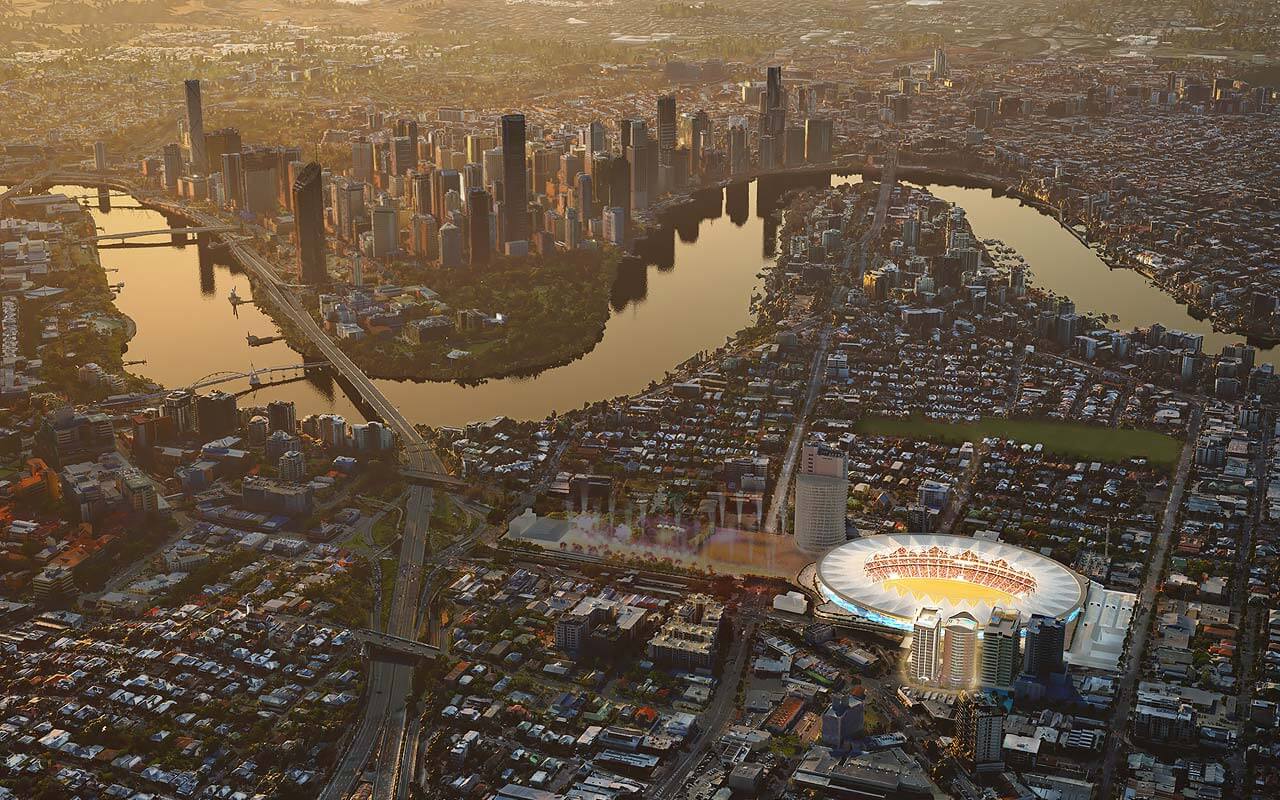The history of Woolloongabba: From isolated houses and farm dwellings to the home of the Olympic Games
An inner-city residential suburb, transport hub, industrial precinct, and world-famous sporting ground, Woolloongabba is many things rolled into one.
It has a long history of occupation and development, but is now poised for new prominence as an Olympic destination in 2032.
And to take advantage of the future infrastructure is Silk Lane, the apartment development that will rise high above The Gabba, The Hub of the Olympic Ganes.
Woolloongabba however was not always the melting pot that it is today.
University of Queensland associate professor in history, Geoff Ginn, shares the history of the suburb.
A Meeting Place
Before the onset of British colonial development in the 1820s, the Aboriginal people of the Turrbal and Jagara clans knew the place as Woolloon Capemm meaning ‘place of whirling water’, a name that reflected the abundant waterholes, swamps and creeks in the area, said associate professor Geoff Ginn.
Ceremonial places included a bora ground on top of Woolloongabba Hill, at the site now occupied by Holy Trinity Church in Hawthorne Street, and two ‘pullen pullen’ grounds for ceremonial fighting nearby.
“In 1824, the founding of the Moreton Bay penal settlement heralded the beginning of the European presence in Queensland and the displacement of the First Australians in the area”, Ginn continued.
In an attempt to achieve self-sufficiency, convicts in the fledgling settlement cleared and cultivated the south bank of the Brisbane River.
Known as ‘One Mile Swamp’, this area had isolated houses and farm dwellings in the 1840s through to the 1850s, when allotments were surveyed and sold.

As the European settlement of Brisbane gathered pace in the 1860s-1880s, most of the southerly traffic from Ipswich Road and Logan Road converged at the site, at the intersection with Stanley Street and Main Street through Kangaroo Point to create the famous ‘Gabba Fiveways’.
“It wasn’t until the 1870s that the name of Woolloongabba was officially used.”
A tram service drawn by horses was active after 1885, with electric trams after 1897. After 1895, these brought crowds to football and cricket matches at the recreation reserve later named the Brisbane Cricket Ground.
A major railway station and goods yard appeared at the site and the surrounding industrial areas as streets rapidly filled up with workers cottages and small timber ‘Queenslanders’.
A few local landmarks from this period included Woolloongabba Post Office, the Princess Theatre and many hotels in prominent positions at road intersections.
“There were also churches and other centres associated with distinct immigrant communities such as the Deutscher Turnverein (now German Club) established in the mid-1880s, the nearby Russian Orthodox Church”, Ginn said.

By this time, with vehicles, trams, and trains filling its streets and footpaths crowded with shoppers and workers, Woolloongabba had assumed its modern form.
Local Amenities
Now an energetic place of work, transport, leisure and community, Silk Lane residents are offered convenient local amenities that dot the suburb.
The apartments are in close proximity to Queensland University of Technology and Torrens University, as well as secondary schools including Anglican Church Grammar School and St Laurence’s College.
Other local amenities include the soon-to-be-completed Cross River Rail station, The Gabba, Gabba Central shopping centre, Deshon Street Park and Brisbane City Indoor Sports centre.
